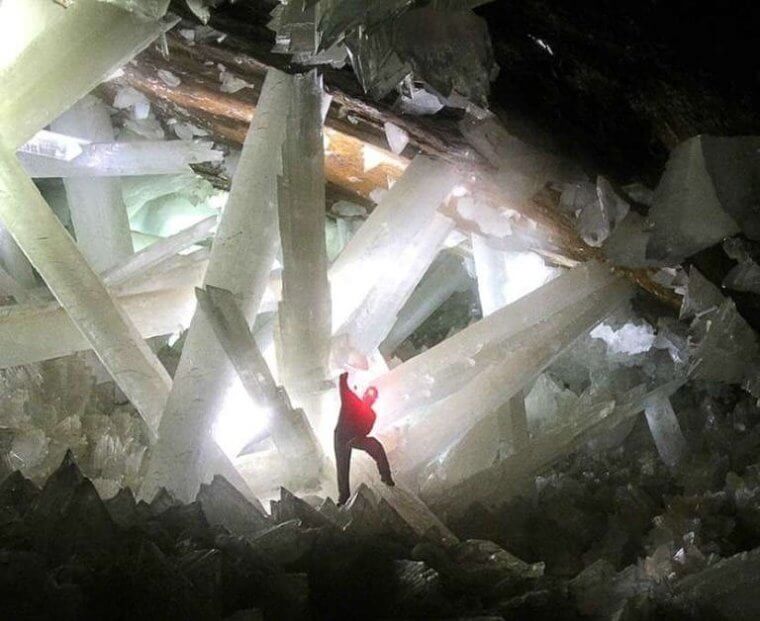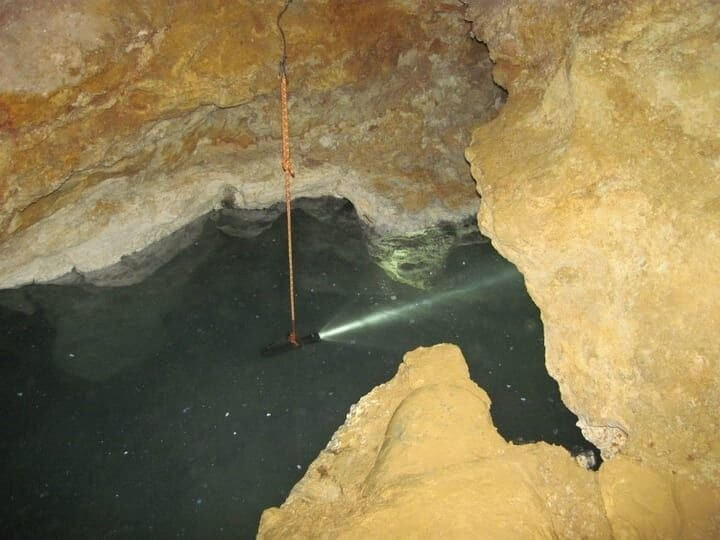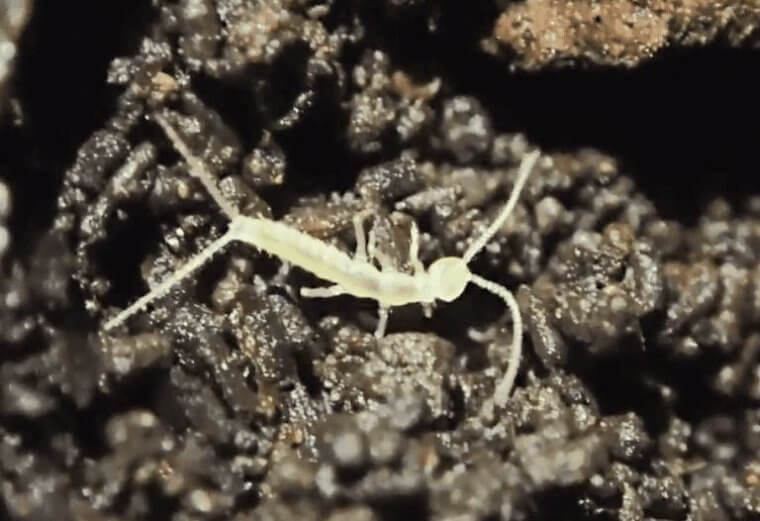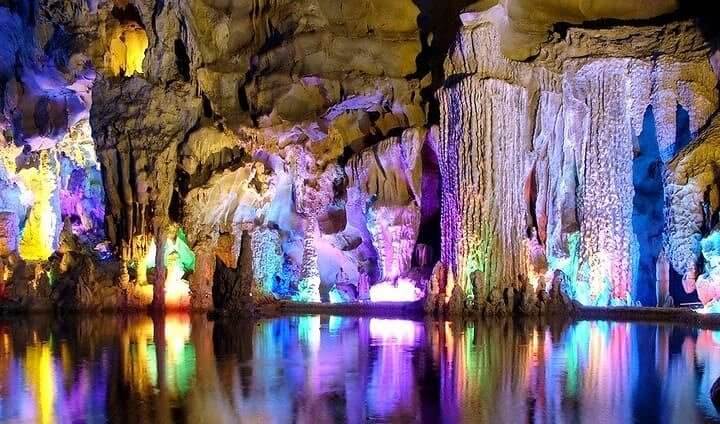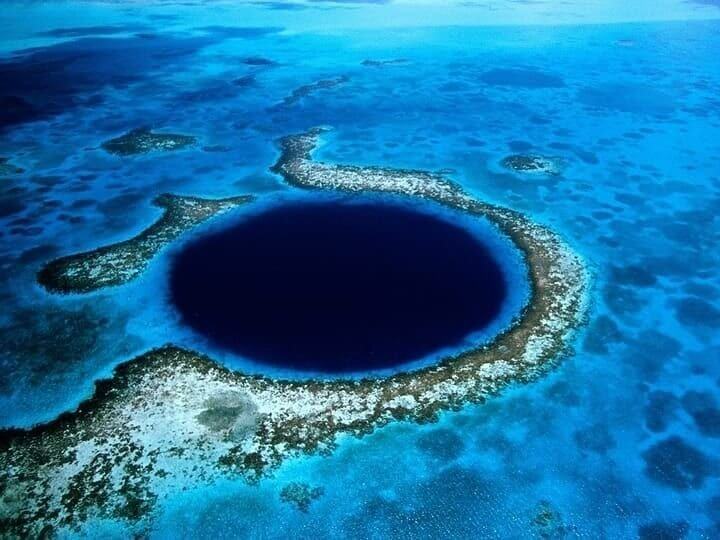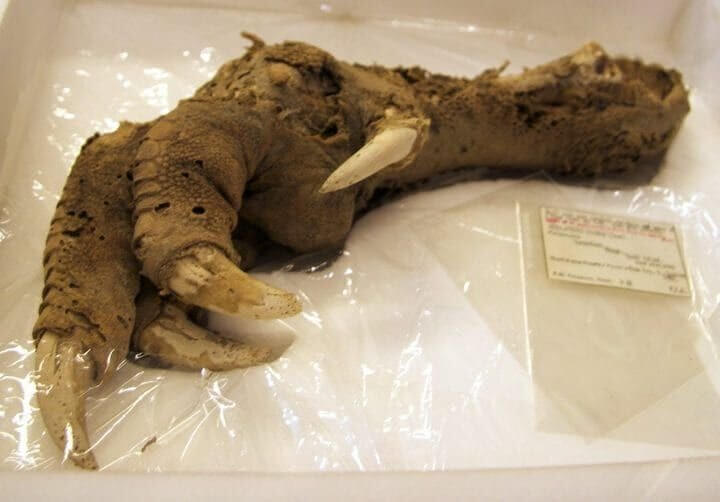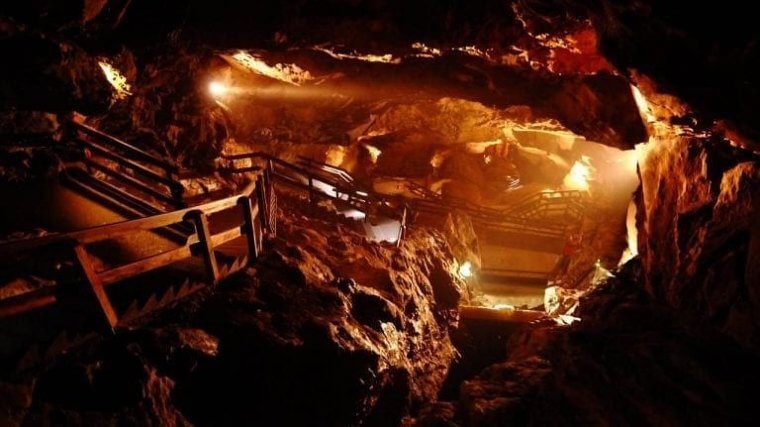Ancient caves have been the sites of some of the world’s most interesting and confusing scientific discoveries. Inside these caves, ancient bodies can be found, the burial grounds of Neanderthals, and sometimes, the remains of life forms that are so ancient that even the archaeological community can’t explain them yet. This article explores all of the biggest cave mysteries. Get ready for the most shocking thing found in one of the deepest caves in the world—you’ll know it when you see it.
Ancient Life?
The giant crystals found in this cave weren’t the only interesting discovery, with life embedded inside them. The initial exploration of this cave wasn’t supposed to lead to any signs of life, but they actually found life that was anticipated to be about 50,000 years old!
This particular cave is in Naica, Mexico. The bacteria and microbes survived in this case by digesting minerals such as iron and magnesium that lived inside the crystal formations. The discovery of this bacteria has now broadened our horizons as to the conditions under which we think life can flourish in. Is this the discovery that will allow scientists to discover life in extraneous conditions such as on another planet?
The Hellfire Caves
Sometimes caves are renowned and warned against so much that people would much rather not enter them at all. That appears to have happened with the West Wycombe Caves in the southeast of England. These cares are the location of some carvings that are, for all intents and purposes, haunting.
The carvings have been likened to look like the Devil, and because of this, the caves have gotten the nickname, The Hellfire Caves. The caves themselves are actually entirely manmade, but the existence of these carvings makes the caves something to fear. If you’re in any way suspicious, you should probably stay away from the cave; your sanity will thank you.
The Center Of The Earth
While the end of some caves has giant lemurs, this one cave, doesn't have an end… okay, it does. But in the deepest pit of Ellison’s Cave is one of the longest drops known in the world—measuring a staggering 586-foot descent, roughly half of the 102-story Empire State Building!
If you want to get to this descent, the only way is to spelunk through 12 miles of dangerous, dark caves. The descent is pitch black and twisting and turning, leaving you reeling and dizzy. However, if you make it the whole way through the terrifying darkness, you’ll get to the huge 586-foot drop which makes Ellison’s Cave in Northwest Georgia the 12th deepest in all of North America.
What’s That? Snot?!
The name is perfect for the texture and consistency of this stringy and gluey substance, snottite. It has a texture extremely similar to mucus and this type of slimy stuff hangs out waiting to stick to and trap insects that fly by. Although this substance was first found in a cave in Tabasco, Mexico, you can rest easy knowing it’s not an ingredient in the sauce.
This gross stuff is a lot of bacterial mats that are formed in such a way that they drip and dangle from the ceiling. It really does have the same disgusting texture as mucus… This type of bacteria is known as ‘extremophilic’ because of the extreme environments that it has been found thriving in. I don’t know about you, but I certainly can’t thrive under the same conditions.
Human Sacrifice
The Caves of Death can be found inside the Smoo Cave in Northern Scotland, and no, they’re not named after that Mel Gibson movie. You know the one where he shouts, ‘FREEDOMMMM!’ before he meets his maker. These caves got their name from the remains that scientists found inside: bones that hinted toward human sacrifice.
You may be asking—what evidence points to sacrifice? Think of the weirdest and freakiest stuff you can imagine and it was all there: bodies in pits, heads on pikes, you name it. Luckily, these caves are incredibly difficult and challenging to navigate. So if you do want to see the discarded and dismembered remains of human sacrifices, you'll have a seriously difficult trek on your hands. But that's probably a good thing.
Stone Voodoo Doll?
Sometimes, we are presented with really scary things, and here, we’re faced with a terrifying statue. At first glance, it looks like a voodoo doll whose eyes were nailed closed, which many of us probably don’t want to see. It really is the stuff you wouldn’t even wish on your worst nemesis.
This statue, called the Crone Statue, was found in 2016 in the Catskill Mountains and the hikers who found it all ended up dead. Just joking, but what they did do was put a photo of the statue on a subthread of Reddit to see if anyone knew anything about it. The discoverers said that they felt a strong supernatural feeling of nervousness when they saw the statue.
The Olm Salamander
Some of the strange things found in caves are uniquely beautiful, and the olm aquatic salamander is one of those things. Despite being blind, its senses of smell and hearing are very sensitive - even more so than that of other reptiles. Olms are completely aquatic and spend their entire lives in the water, moving similarly to eels underwater as they have no fins.
This small animal lives in the caves of Slovenia and Croatia, and its flesh-colored skin has led to it being dubbed 'the human fish'. In fact, in some olms, you can see internal organs through the translucent skin. Olms do contain melanin in their skin, however, and so can turn darker with exposure to light.
A Cave Full Of Poison
Romania has long been home to vampires, ghosts and other types of ghouls. Near the Black Sea, in Constanta, you’ll also be able to find caves that are poisonous. This particular cave has been untouched for close to 5.5 million years, and during this time, certain lifeforms have adapted to the odd and hostile environment.
Generally, animals and creatures like scorpions, spiders, and centipedes live in caves. Creepy crawly things that a lot of us would jump or scream if we came close to. This cave is the Movile Cave and inside its darkness, you’ll be faced with a smell that is a combination of rotten eggs and burnt sulfur. When it’s interfered with, it will also release a poisonous gas called hydrogen sulfide.
A Cave Of Poison, Continued
Scientists have no choice but to be plunged into the dark, dangerous and poisonous depths of these waters to explore the rest of the cave. To add to the difficulty, the cave also has a relatively low oxygen level—about half the normal level. That means that if you don’t have a breathing apparatus, you''re brain will be deprived of oxygen and you will die.
The combination of these conditions means that people can only stay in the caves for a few hours at a time. However, unlike humans, many other species have survived and thrived in these extreme conditions. This just shows that just because humans can’t live somewhere, doesn’t mean nothing can live there. In fact, there are generally a lot of varying lifeforms that exist in environments that are hostile to humans.
Even More About The Cave Of Poison
No sunlight can get into the cave, which means its ecosystem has to exist completely without sunshine, and this is the case with animals or species that live in darkness. This cave is home to bacteria that get carbon dioxide the same way as plants do, but without getting it from sunlight. It’s also the only place on Earth where it is known that this happens.
You’re probably wondering how they do it. Well, they break down the chemicals that exist in the air. For example, certain bacteria break sulfur down into sulfur dioxide. Then the larger presence of sulfuric acid caused the limestone to break down, even more, making the cave expand and grow.
Cannibals of Old
Evidence of Neanderthal cannibalism was found by scientists in a cave in Spain. The site led to the discovery of 30 or so bones broken, dented or crushed bones that strongly hints towards cannibalism. This evidence is that the bones had been sawed through or chewed on, leaving behind nothing but food for thought for future generations to consider about this ancient people.
In fact, the bones showed signs that then were worked on with tools made of stone after being cooked, and others had teeth marks. The bones are about 10,000 years old and scientists think that the cannibalism and violence were not necessary for nutrition, but rather they were used to intimidate other competing groups.
Mysterious Mountain Cave
The Panxian Cave is located in a valley 1,630 meters above sea level in Southern China and is a Paleolithic cavern. There are so many questions to be asked about this cave: how could enormous animals reach this mountain cave located so high above sea level? Did early-man exist in China during the same time when the Homo-erectus was occupying the Zhoukoudian site near Beijing?
There’s no denying that humans were present in the Panxian Dadong Cave around 300,000 years ago, and so were huge forms of early man. But scientists are confused as to how they could have gotten to the mountain cave, 1600m above sea level.
No-Eyed Fish
Many species of animals have adapted to living in caves, and most of these species have, throughout the evolutionary process, lost their eyes, which makes a lot of sense since there is absolutely no visibility inside a cave. Bats developed a finely tuned sense of echolocation, while the olm salamander we mentioned earlier developed a sixth sense to pick up on electricity. However, there’s a fish here that had adopted a new sense.
This fish uses what’s known as a lateral line in order to sense vibrations or changes in the water pressure. The lateral is, thank you, scientists, exactly what it sounds like, a line running through one end of the fish to the other. It detects changes in the vibrations of its environment, channels them up to the central nervous system of the fish and therefore enables the fish to understand its surroundings without being able to see anything.
A New Ancient Human Species
The largest single discovery of skeletal bones has been found in a cave in Africa, but the most unique thing about these bones is that they’re not of any known species of human. In actual fact, they belong to a species of ancient and unknown human that was previously unknown.
Homo Naledi is the name of the human species. And although scientists haven’t narrowed down the exact age of the species, they think it lived about 3 million years ago. This human species is differentiated from others by the shape of its skull; the brain cavity is much smaller than other hominids, and the brow ridge was much more pronounced.
The World’s Biggest Snake
This is a photo of the largest snake ever found on Earth. It is an amazing 33ft in length, breaking the record for the previous monster snake by close to 10 feet. The previous record-holding largest snake in the world was called ‘Medusa’ and Medusa lives in Kansas City, Missouri.
The snake that’s bigger than Medusa was found in a cave in Brazil. It was found by builders who were burrowing down even deeper into the cave system in Altamira, Para in the North of Brazil. So, if you want to avoid coming across some of the most horrifying and largest beasts in the world, it might be an idea not to visit this area of Brazil. If you don’t, then you might come across some scarily long snakes.
Small Humans And Their Homes
A new species of human was actually found in a cave in Indonesia. It turns out that these humans were quite small, and we mean really small; they were only around three feet tall. The species is called Homo Floresiensis because they were found in the Liang Bua cave, just off the Indonesia island, Flores.
It was first thought that these humans lived about 12,000 years ago but new research has shown this wasn’t the case. In fact, it’s now thought that this species of human died out 50,000 years before the Neanderthals and to be between 100,000 and 60,000 years old.
Ancient Art
Caves are normally full of mystery, the good kind! In fact, some caves have shown us a lot of detail and information about civilizations that existed in ancient times. This cave in Argentina shows us how ancient people were able to create art. They expressed themselves through their art which is made up of dozens of handprints made from red chalk powder.
The paintings are thought to be between 9,500 and 13,000 years old. The quality of this prehistoric art shows that humans liked to express themselves artistically long before modern technology and iPhones. It also shows that prehistoric humans liked to express themselves in interesting and beautiful places.
Strange Underwater Discovery
Divers found bones belonging to giant lemurs in a cave underwater in Madagascar and some of these lemurs are supposed to have been as big as gorillas! However, no one is certain how these bones got into the underwater caves, but there is a suspicion that they were dragged or pushed there by the tide.
Before humans existed, the world was home to all sorts of enormous creatures. Giant lemurs aren’t exactly the first to come to mind, but there have also been giant versions of dragonflies, ostriches, and even a giant deer that was over 10 feet tall. These creatures are a testament to the amazing power of evolution is. It bears the question: what’s hiding in the caves that are even deeper?
Taking Cover
China is home to one of the most beautiful caves in existence, the Karst Cave. This cave is stunning because the rock composition reflects various shades of purple and blue. This cave was created and formed by an ancient river about half a million years ago and is also called the Reed Flute Cave. It looks like it should be in Charlie and the Chocolate Factory.
This cave, in particular, is unique because it was also used a bomb shelter during the Second World War. Because the cave was really accessible, it made it easy to hide from falling bombs and gunfire. Which is exactly what Chinese soldiers did when the air raid siren blared.
Strange And Unusual Cornwall Caves
There is no shortage of ancient and mysterious places. In Cornwall, England there are caves that are well-preserved in their mystery despite dating back to around 500 B.C. Scientists have no explanation as to the strange light phenomenon that people who visited the caves claim to have seen. Visitors also say they heard strange sounds and had extraordinary visions inside the cave.
Our ancient ancestors knew about the Earth’s energy and the power that it holds, and that’s why they built sacred monuments on these types of power spots. These sites are extremely powerful, which is why people experience strange physical reactions. Maybe that’s why visitors had such an unusual reaction to the caves.
A Celestial Cave
Most of us have seen photos of bacteria that glows and seems to live in an angular fish bulb, certain tides of certain seas and other phosphorescent things. This image is of glowing bacteria living on the walls of caves. While these bright orbs look like they’re just hanging out and dangling from the ceiling, their actually waiting to catch flying insects for their next meal!
A huge amount of these glowing worms live in this cave in Waitomo, New Zealand which was formed around 30 million years ago. To see the glorious glowing bacteria for yourself, all you need to do is book a ticket to New Zealand and then kayak for a couple of hours. Simple!
A Deeper Shade Of Blue
Caves aren’t always on land, and can sometimes be submerged very deeply under water. For example, there are numerous caves beneath the surface of the crystal blue waters of the Bahamas. In fact, the highest concentration of underwater caves in the world can be found in The Bahamas.
Blue hole caves get their name from their aerial appearance because they generally have a different shade of blue to everything else that surrounds them. This color is because their entrances trap light, causing water near them to reflect a darker shade of blue. So, if you want to find out where these caves are, a drone might be worth the investment!
Neanderthal Jewelry
Jewelry made by Neanderthals was found in another cave. The jewelry was primarily made of painted shells and other types of aquatic remains. Scientists also found some Neanderthal inside the cave, dating back to around 64,000 years ago. These things were all found in a cave called the Cueva de Los Avinoes.
The jewelry was found to date back as far back as 115,000 years ago and the art is some of the oldest cave art ever discovered. For context, the jewelry was created 20,000 years before humans with modern anatomy had come to Europe from Africa. That’s how ancient all these things are.
So Many Bats
It’s no secret that bats live in caves and in Barangay Tambo on Samal Island, bats live in huge amounts. In fact, this cave is home to the Monfort Bat Sanctuary, which is home to enough bats to make Dracula scared. However, the cave itself isn’t that deep—only about 245 feet, which is really nothing in comparison to the caves to come.
Bats are a species who we know have adapted extremely well to cave life. In fact, they’ve adapted to the darkness of cave life so well by developing a wonderful system of echolocation. This echolocation means they can figure out their surroundings using soundwaves. Soundwaves bounce off the walls and pillars of the cave, and the bats use the delay it takes for the waves to come back to them to work out distance and speed.
Ancient People And Society
Neanderthal structures were found in this cave in France. The structures built by the Neanderthals were made from the stalactites and stalagmites for seances or other prayers and rituals that Neanderthals took place in. All this suggests that the Neanderthals were all using the caves for gatherings of a ritual type.
Prehistoric people used more than 400 stalagmites and stalactites to build their effigies in these caves. In general, they built room-sized circles and pyres. No one is certain what exactly the Neanderthals were doing with these circular builds, but we can’t deny that it’s a really fascinating look into their culture.
Minerals And Pearls
Most people know that water that is full of minerals can create stalagmites and stalactites that can be almost as long as buses, but this type of water can create other things, too. In this cave, the mineral-rich water has created what scientists call ‘cave pearls’. These are not as valuable as regular pearls, but these smooth, circular and small rocks look almost as nice.
These pearls are formed by calcite-heavy water dripping onto the dirt, resulting in the smooth clumps of dirt we have here. When enough time has passed, these dirt deposits form solid rocks with a new look and pearly glaze. They are definitely worth getting a glimpse of.
Whoa, Mao
Scientists were not expecting to find something like this. When you look at this first, it looks like something straight out of a science fiction movie, but it’s the claw belonging to an ancient beast. The beast was an ancient species of bird, that’s now extinct, called the Mao. The Mao bird used to live in New Zealand, and this claw was found in a cave there.
This Mao claw is a great example of how terrifying ancient beasts could be, and the Mao was larger than any other bird that currently still exist. In fact, the Mao was so massive that humans were its prey. Although humans were probably smaller than they are now, this fact is no less horrifying or amazing, which makes the Mao one of the most formidable birds that is ever thought to have existed.
Underwater Lakes
Some caves are the perfect combination of land and sea, a perfect hybrid. So much so, that sometimes you can find entire lakes inside of a cave. The Melissani cave off the Greek island Melissani is one such cave. This cave is also accessible to locals and tourists who want to explore the cave using canoes or kayaks.
The waters of the Melissani cave are translucent, clear and breathtakingly beautiful. If you’re in Greece and looking for some extra natural beauty, then try to take a trip to this cave. The trip will not just provide you with some beautiful water, but you’ll be able to tick another cave exploration off your list.
Mineral Pillars
Most people think of stalactites as one of the main features of a cave when we think of them. Stalactites hang from the ceiling and are formed from the constant dripping of sediment-heavy water from rock formations. When a long enough time has passed, the sediment will add to the rock formations, making them longer and eventually becoming the pillars known as stalactites.
Jeita Grotto in Lebanon is home to the longest stalactites in the world, and the longest one is a staggering 27 feet high! Given that stalactites only grow about 0.13mm a year, it goes without saying that these stalactites have been growing for quite some time.
Mineral Composites
Stalagmites are the evil version of stalactites. No, they’re not, we’re just kidding. The only real difference between stalagmites and stalactites is that stalagmites are formed by mineral deposits dripping onto them, while stalactites are formed by mineral deposits dipping off of them. Stalactites, therefore, collect water by being dripped on, which is a bit grosser.
In the Doolin Cave in Clare, Ireland, the longest stalagmite in the world was found and it measures around 21 feet in height. To put that into perspective, that’s about the same length as the nose of George Washington’s statue on Mount Rushmore. So if you want to see some fairly impressive cave-growths you should take a trip to the west of Ireland.
Looted Scrolls
There was much more to be found inside this cave in the Judean desert than simple lakes or bacteria that glowed. You ask what exactly was to be found there? Evidence of the Dead Sea Scrolls. The scrolls themselves weren’t found in the cave, but there were many other items buried inside the cave of one of the cliff faces in this mountain range.
The scrolls were looted way before they were found in 2017. This suggests that a lot more could have been found inside the caves if they were explored earlier. The first of the actual manuscripts they did find was found in 1947. This manuscript contained texts from the 4th century BC and the 2nd century AD and all the texts were written on papyrus and animal hide.
Neverending Depths
Some caves have unknown depths, where the bottom hasn’t been found yet. Expeditions through caves often involve navigating through hundreds of narrow twists and turns, leading to even more to cross. In this cave, scientists only went as far as they could with their supplies, and this wasn’t even close to the bottom.
One of the deepest caves yet discovered is the Krubera Cave in the Republic of Georgia. So far, the furthest anyone has traveled down was 6,824 feet. However, people are continuing to break the record and go even deeper into the caves neverending depths. What’s even more interesting about this cave is that scientists and cave divers have set up campsites within the cave so they cave navigate it with checkpoints.
More Neverending Depths
Traveling this far into the center of the Earth takes time. In fact, people sleep four or five to a tent, spend weeks underground and work 20 hours a day the whole time. This type of feat is disorienting and really limits a person’s ability to travel through the cave at any type of speed. It’s also a frequent requirement that you have to wade through freezing cold lakes made of unknown minerals.
Sometimes, people have to squeeze through extremely narrow tunnels that go on for around 100 feet, sometimes more. The challengings of navigating an unexplored cave are both difficult and grueling. It takes a huge amount of time and effort and it’s crucial to be aware of safety at all times. It’s anything but a walk in the park.
Massive Crystals
We mentioned earlier that life was found in the center of some crystals that were around 50 million years old, but we didn’t actually mention the crystals. These crystals are actually enormous, sometimes they weigh 55 tons and measure 36 feet long. They’re definitely reasonably intimidating.
The mega-crystals come from the perfectly named Cave of Crystals in Naica, Mexico. The crystals themselves are definitely worth seeing but the cave environment in which they exist is actually incredibly hostile. The cave is about 118 degrees Fahrenheit and the humidity level is generally around 90 percent. In fact, this makes it hot and humid enough for a human to die within half an hour if they don’t have the correct protective gear.
Cave Mysteries
By now it’s fairly apparent that caves are often hosts of their own lifeforms, ecosystems, and colors. They are home to no-eyed fish, weird salamanders that can pick up on changes in electricity and depths that no humans have ever known before. These things all come together to make caves comes of the most mysterious places and structures within the Earth’s crust.
The more time we spend in caves, the more we start to learn about these strange environments and the gems that are to be found within them. This adventure will lead to many revelations, be really interesting and teach us a lot. It’s something to look forward to, no matter how mysterious, creepy utterly satisfying it will be.
Connected Caves
In Salzburg, Austria the Leoganger Steinberger area can be found, and this is where a Polish expedition connected the Vogelshacht and Lamprechtsofen caves. This cave system is huge and it is still being explored by spelunkers. It is at least 5,354 feet deep, but there’s a high likelihood that is it much deeper than that. It is another cave system that is potentially the deepest one in the world.
There came a point where this exploration couldn’t go any further or deeper into the cave without using explosives. However, so far the team hasn’t used any explosive in the Lamprechtsofen exploration, but afet the connection was made between the two caves, everyone involved has become super excited about the next breakthrough they’ll discover within its depths.
An Extraordinary English Cave
In England there lies a circular bell-shaped chamber that was carved into chalk bedrock, which is now called the Royston Cave. Inside this ancient cave, mysterious and unexplained carvings have been found which some people have suggested hint to the cave holding the secret of the Holy Grail.
In fact, researchers think the cave was used by the Knights Templar. However, no theories have been completely confirmed yet, but there are many theories suggesting Freemasons and Templars. There are also theories that the cave was a jail or a cell used by anchorites. What’s for sure is that this cave is unique because of its exquisitely engraved religious figures, along with pagan and Masonic symbols.
Footprints In Transylvania
The Carpathian Mountain Cave that’s home to 36,500-year-old footprints could possibly rewrite history because this location is quite historically significant. Not only did the legend of Count Dracula make Transylvania famous, but many battles were fought in this region.
Around 400 footprints were discovered in the Ciur-Izbuc cave in the Western Carpathian mountains in Transylvania, Romania. Two bear bones that were found and excavated just underneath the footprints were radiocarbon dated and anthropologist David Webb of Kutztown University, Pennsylvania say the tracks were made by homo sapiens around 36,500 years ago. The question remains now though, what happens to the people who once lived in this cave?

